Japan has a wide range of traditional clothing of which the kimono is the most well-known. The kimono is also labeled as the national garment of Japan and comes in many different types and accessories. Before WWII, most people in Japan wore kimono and other traditional clothing every day, however, today you see them only on special occasions such as festivals, ceremonies, and weddings or in historical cities like Kyoto. There are various types of Japanese traditional clothing depending on occupation, gender, and age of a person, as well as occasion. In this article, we will introduce some Japanese traditional clothing and accessories.
▼ Rent the best kimonos in Japan here! ▼
Official Website: Kimono Rental Wargo
Kimono
Kimono literally means a “thing to wear” in Japanese. Today, a kimono is worn only so often, mainly during special and formal occasions such as weddings, tea ceremonies, formal traditional events, and funerals. There are many different types and styles of kimonos and the appropriate style and colors of kimonos are chosen depending on the occasion and the person’s age and marital status.

The history of this traditional Japanese garment goes back to the Heian period (794-1192). Over time, people started wearing the kimono as everyday clothing and gradually layering came into fashion. By the Edo period (1603-1868), kimono-making had become a specialized craft. During the Meiji Period (1868-1912), various foreign cultures heavily influenced Japanese culture, clothes being also part of this. The Japanese government started to encourage people to adopt new (Western) clothing styles. Today Japanese people are wearing Western-style clothing and only wear kimono for special occasions.
Components of a kimono
A kimono is traditionally crafted from handmade and hand-decorated fabrics, including linen, silk, and hemp. Materials such as polyester, cotton, and rayon are also often used nowadays. Decoration techniques include embroidery, painting, and dyeing. Men’s kimonos usually have more subdued colors than women’s kimonos, which are generally more colorful and have beautiful, rich patterns. A women’s kimono is accompanied by a wide belt called obi, which is often a piece of art in itself with gorgeous patterns and colors. There are various techniques for tying an obi and making a bow.
Kimonos were traditionally worn with 1 to 20 layers for fashion and warmth depending on the formality of the occasion, the social status of a person wearing the kimono, and the season. These layers include a nagajuban, a simple robe that is worn under a kimono. People used to wear another layer of clothing between nagajuban and kimono called hiyoku for a formal occasion. Today, however, hiyoku is substituted by tsuke-hiyoku, which are partial double layers at the legs or collar that make it seem like you are wearing a hiyoku.
Recommended article: 11 Different Kimono Patterns and Their Meanings
The price of a kimono
The price of a kimono can vary greatly depending on the material used and decorations, the typical fee for a basic kimono starts at ¥20,000, with silk kimonos priced somewhere between ¥380,000 to ¥10 million. Luxurious silk kimonos with rich embroidery and/or painting can easily cost up to millions of yen. This is part of the reason why good quality kimonos are passed down from generation to generation. Today, many people also rent a kimono to wear at weddings or other formal ceremonies. Yukata prices range between ¥3,000 and ¥10,000 and are widely available. Many souvenir shops sell them, but also mainstream shops such as UNIQLO sell traditional Japanese summer wear.
Where to rent a kimono in Japan
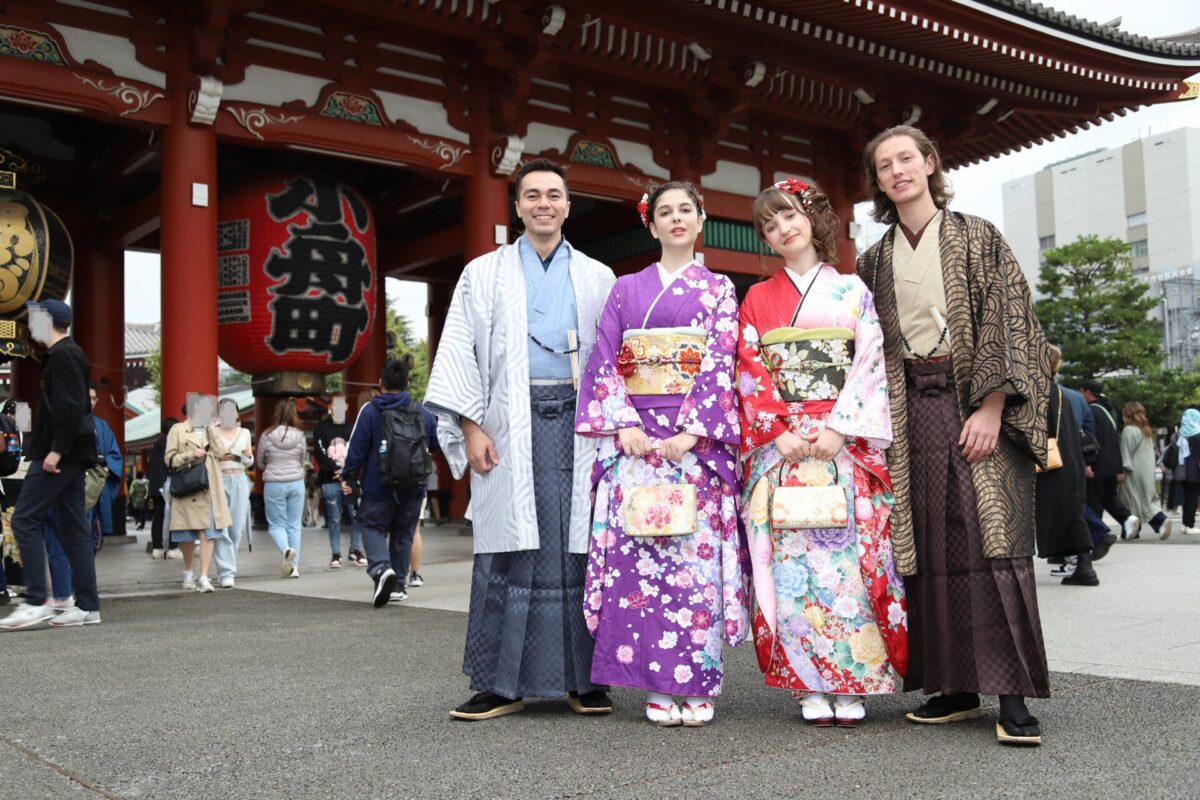
When visiting some of the big tourist spots in Japan like Asakusa and Gion, you have probably seen quite a few people walking around wearing kimono. I think it’s safe to say that almost everyone would like to try dressing up in a beautiful kimono at least once in their lifetime. But with so many shops and styles to pick from, how do you go about picking one? We recommend Kimono Rental Wargo which has locations in popular spots throughout Japan. They have plans starting from 3,300 yen, a wide selection of sizes, and friendly staff that will help you pick out the perfect kimono for you from their hundreds of options. They also offer same-day online reservations as well as walk-ins for those who want to keep a flexible schedule. Have a look at all their plans below!
Types of kimono
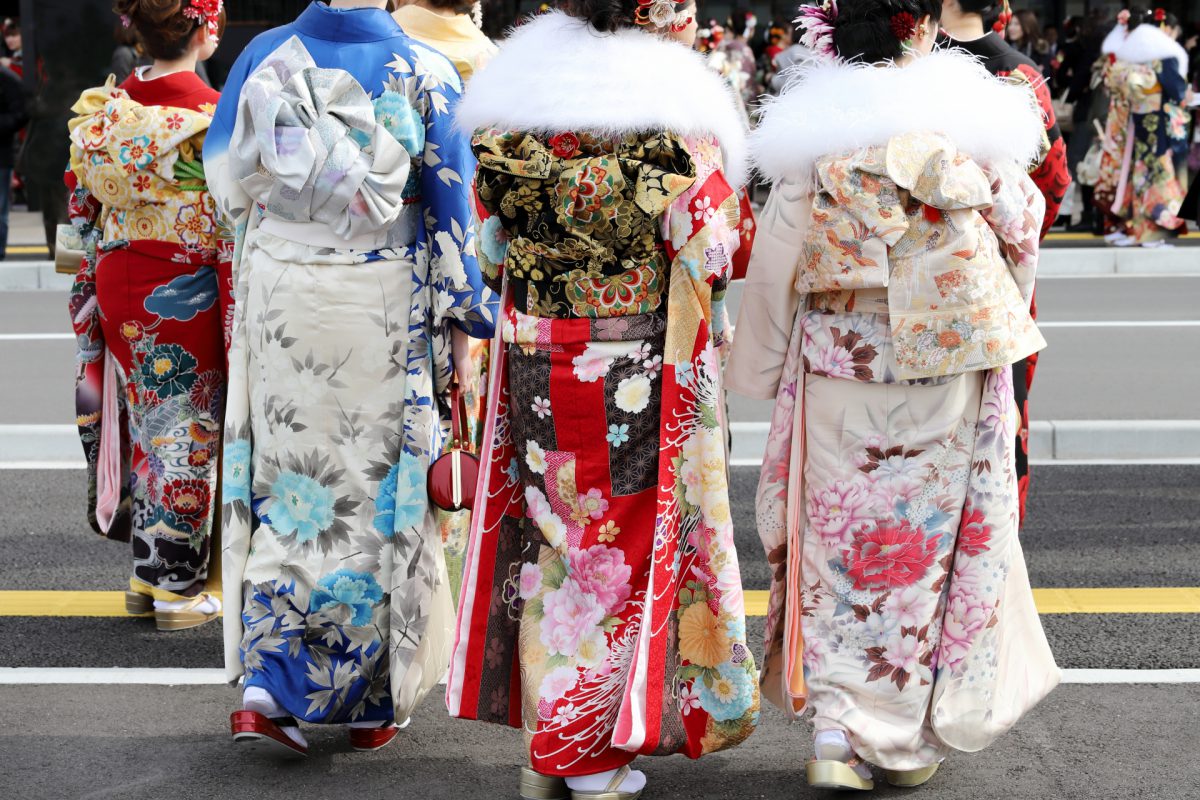
There are many different types of kimono, especially for women, depending on the occasion, the person’s age, and marital status. The furisode or swinging long sleeves are worn by unmarried women and girls. The furisode usually comes in bright colors and dramatic designs, and today most women wear it during the coming of age ceremony.
Yukata
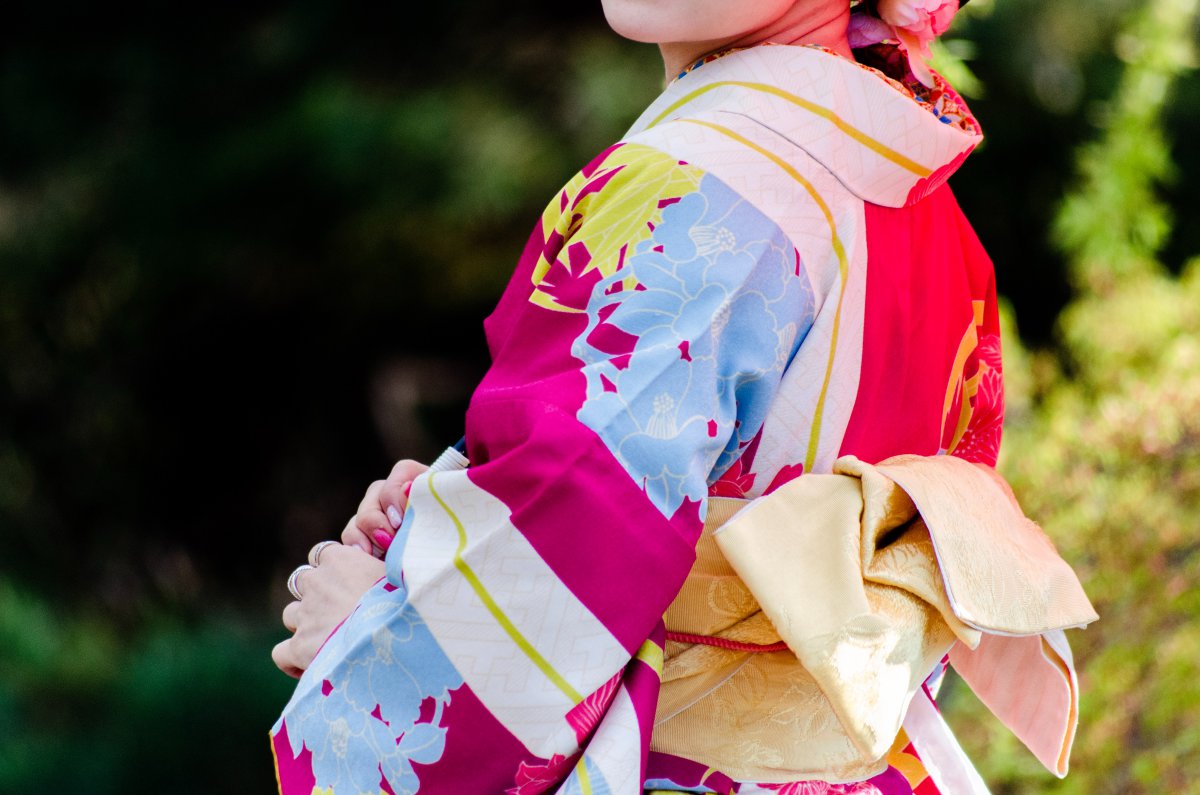
The yukata is a casual version of the kimono popularly worn at ryokan and during summer festivals by both men and women. A yukata is traditionally made of cotton, and today sometimes it is also made of polyester. Because a yukata is worn without undergarments, it is lighter than other types of kimono. Though it is the most informal, the yukata is the most popular among Japanese kimono types, and you can see people wearing yukata not only during festivals but also in historical cities like Kyoto. Being a much cheaper alternative to the traditional kimono, a yukata is also a popular souvenir among tourists!
Haori & Hakama
Haori and hakama are, when worn together, a formal outfit for men typically worn by a groom during a wedding, coming of age ceremony, and other big life events.
A haori is an overcoat worn on top of a kimono. In the past, haori were worn by men in battles to protect them against the cold. However, in modern Japan, haori are also used as a work uniform of those working in classical Japanese theater, or as an overcoat to be worn over yukata in ryokan. Women can also use haori over kimono.

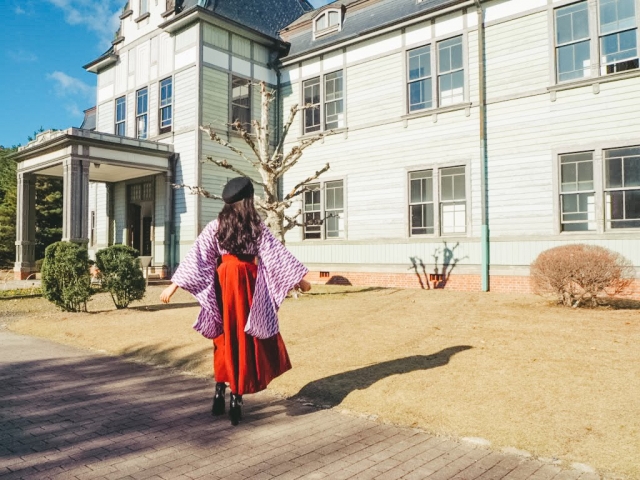
The hakama is a skirt-like pants worn with a kimono. The Japanese hakama were originally worn only by men such as samurai and people participating in Shinto rituals. However, in the modern era, women also wear them on certain occasions including a university graduation ceremony. A hakama is also worn by people working at a shrine, or when doing kendo (Japanese swordsmanship), kyudo (Japanese archery), aikido, and other martial arts.
Happi & Hanten
A hanten is a short winter coat with cotton padding for warmth and a tailored collar. It was originally worn over a kimono or other garments for both women and men. It is similar to haori, however, in the Edo period wearing haori was restricted to certain social classes, while hanten were available to all.


A happi is also a short coat but much more casual than the haori or hanten. Happi were originally worn by house servants as the family crest representatives. In the past, firefighters also used to wear a happi, the symbol on their backs would refer to the group to which they belonged. A happi comes usually in plain colors, typically blue, with white, red, and black. Nowadays a happi is worn mainly during festivals, with the kanji for matsuri (festival in Japanese), printed on the back, and it often comes with a matching headband.
Fundoshi
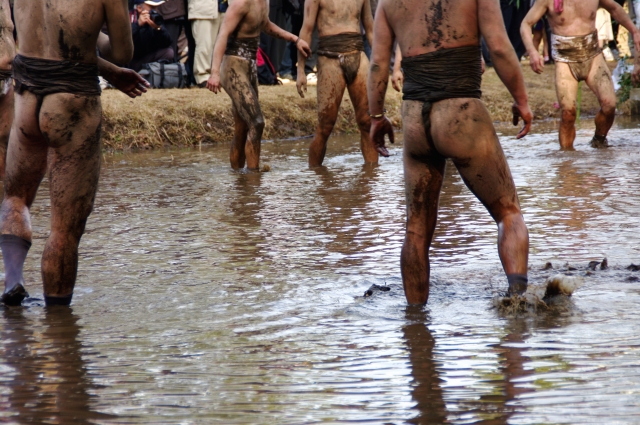
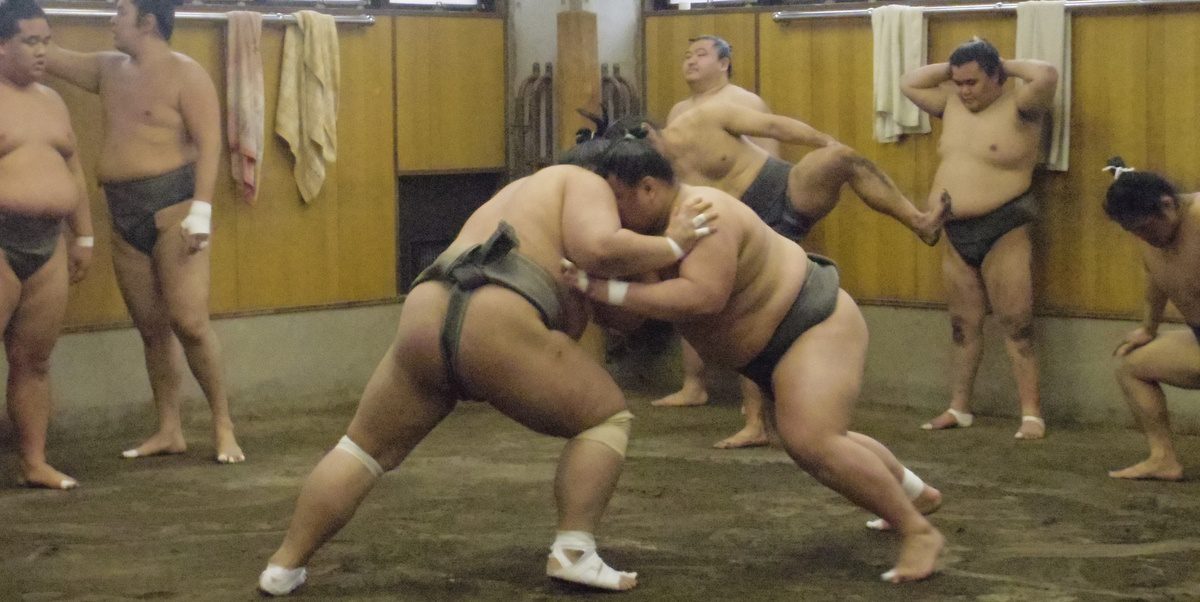
The fundoshi is a comfortable and very traditional Japanese male undergarment, made from a length of cotton. Until WWII, a fundoshi was mainstream underwear among men in Japan, and there were several different types which were worn for different events, situations, and among different people. Nowadays, you probably only see fundoshi being worn at traditional festivals. Sumo wrestlers also wear a type of fundoshi called mawashi.
Samue and Jinbei
Samue and jinbei are traditional relaxing clothes made from cotton or hemp and are typically dyed with a solid color such as indigo, blue or green. They both come in a matching set of a top and trousers.
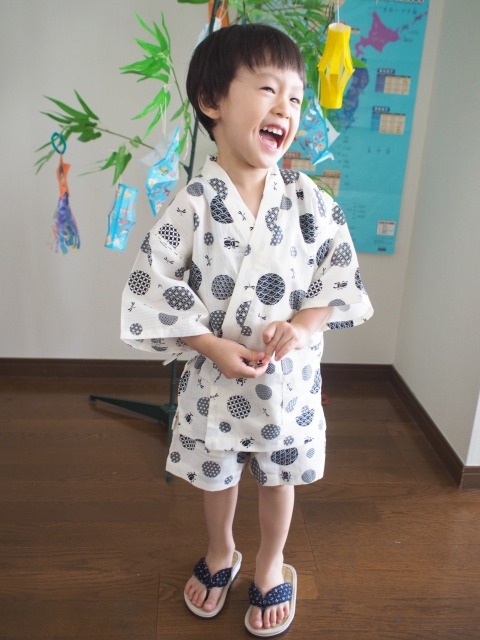
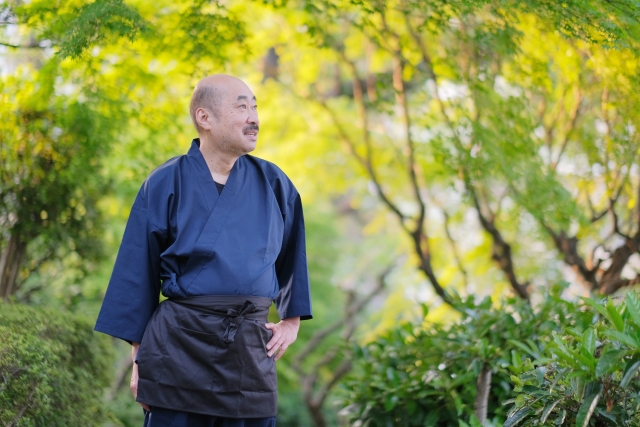
A samue was originally worn by Buddhist monks when they work, while the jinbei was used by townspeople for everyday use. Samue are often worn by farmers when working in the garden.
The samue and junbei look very similar to each other, but the crucial difference between the two is the pants. The trousers of the samue are long trousers up to the ankle, and Jinbei are shorts under the knee. The second major difference is that many of jinbei are knitted with yarn about the shoulder parts for better ventilation. The samue is worn regardless of the season, but jinbei is basically summer clothing.
Japanese traditional accessories
Kanzashi
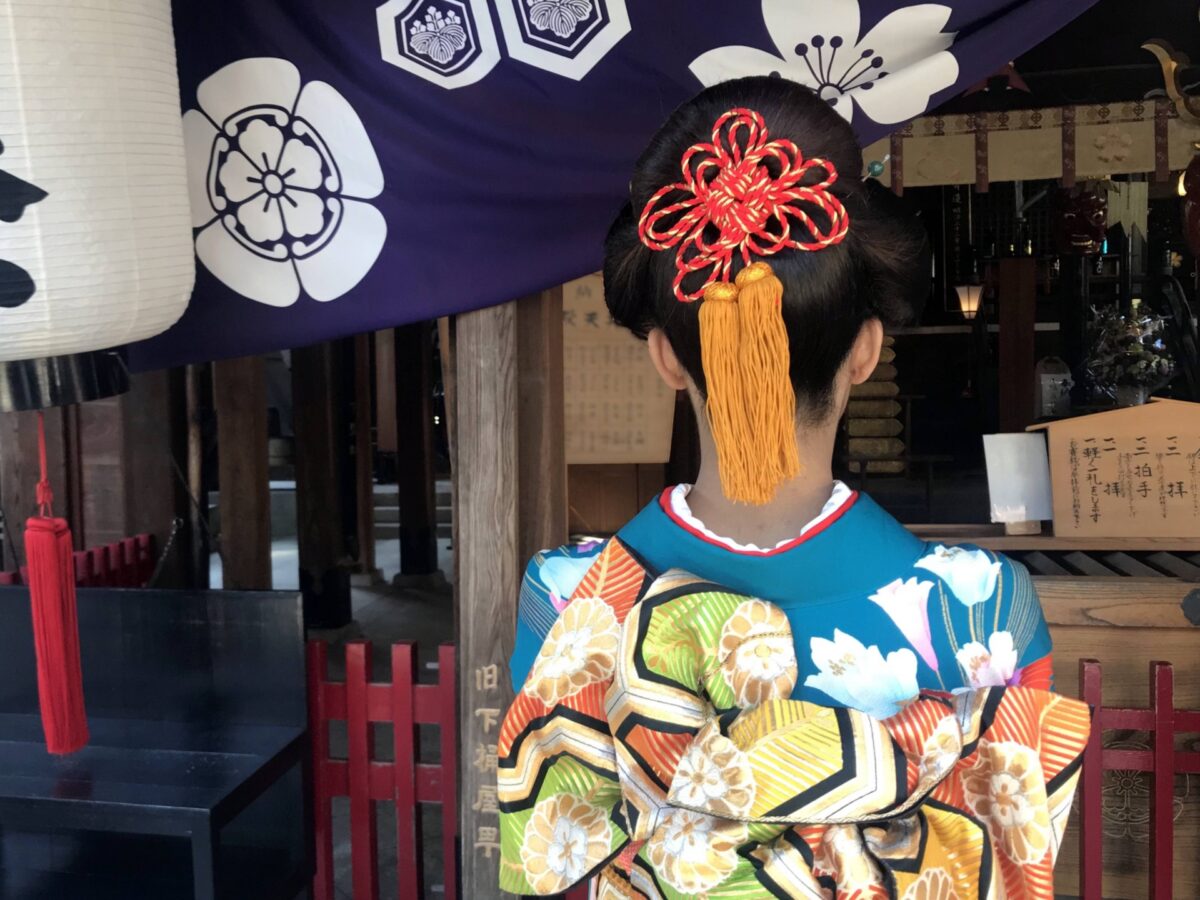
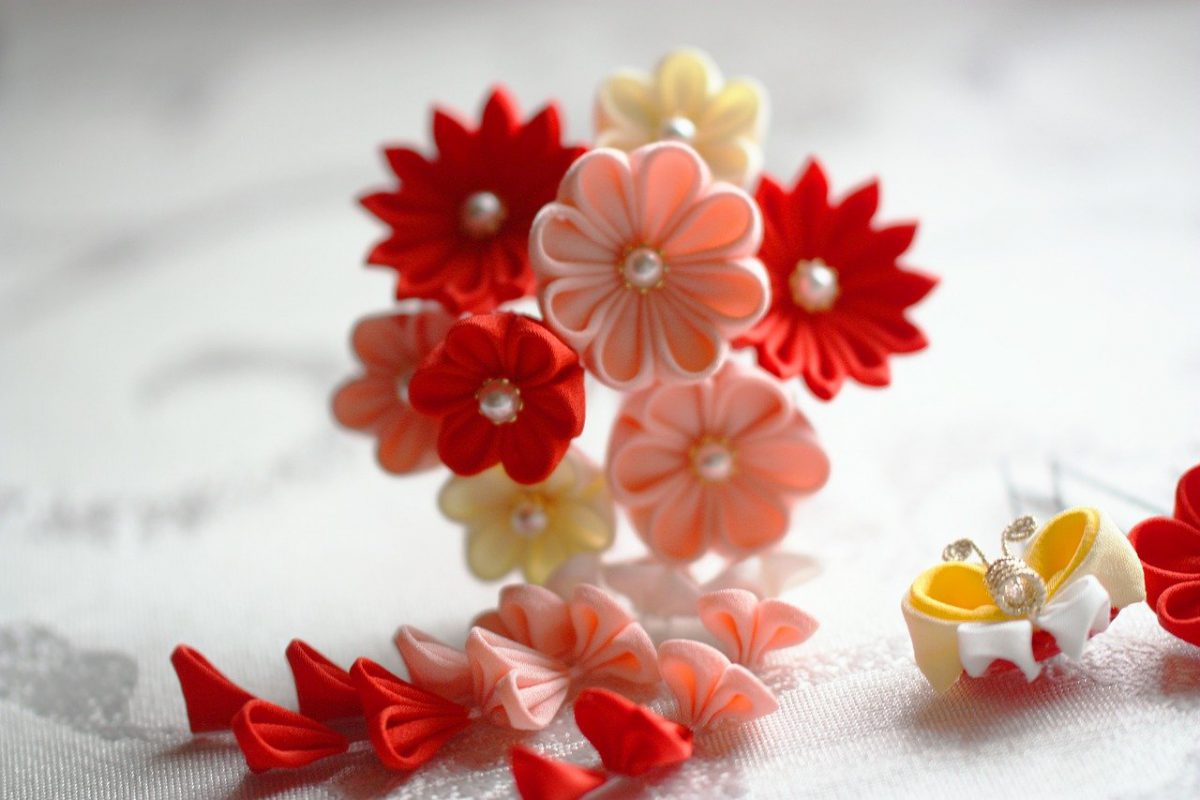
When women wear kimono, they usually use kanzashi, hair ornaments, to complement their traditional Japanese hairstyles. The kanzashi has a long history and is still worn by many in modern times. When attending a formal event, many women will wear a kanzashi in their hair.
There are many types of kanzashi including Tama (ball) kanzashi, Hirauchi (flat) kanzashi, Yuremono (swinging) kanzashi, Musubi (knot) kanzashi, Tsumami (knob crafted) kanzashi, and Bachi gata (fan shaped) kanzashi. Hair combs can also be beautifully decorated and used as a hair ornament.
Tabi
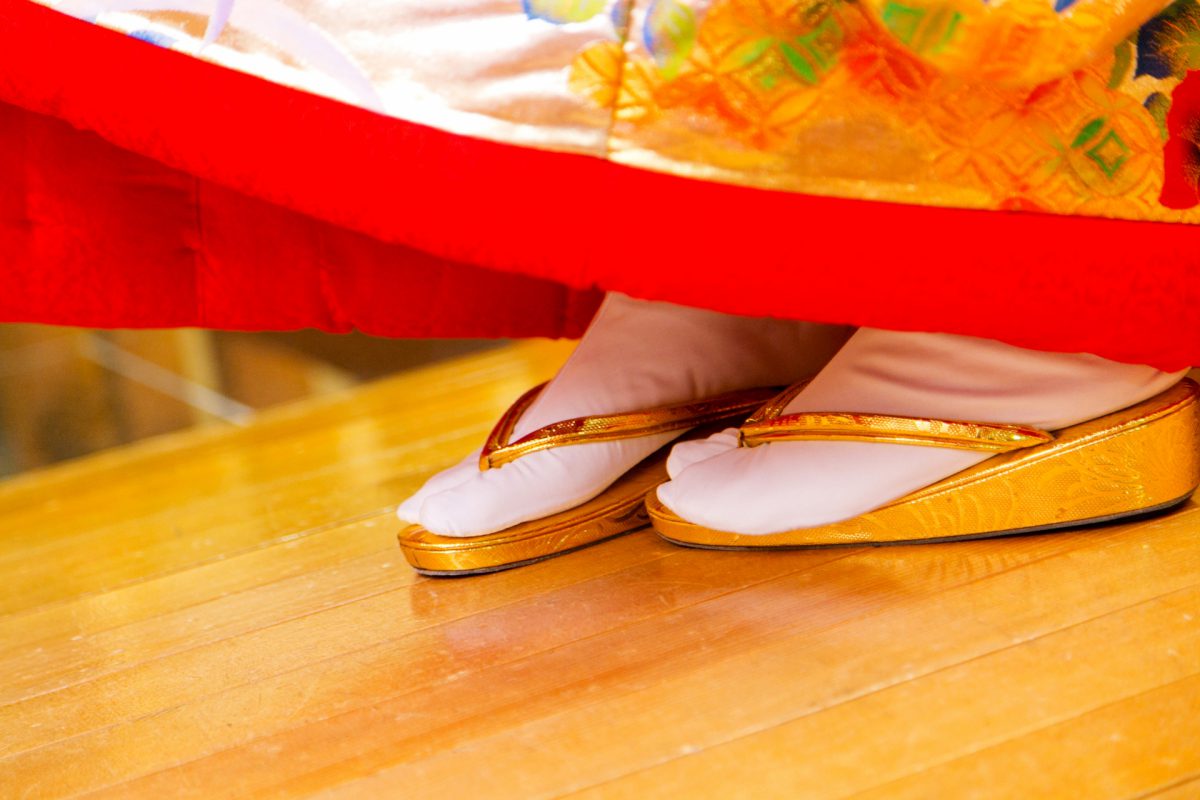
Tabi are traditional Japanese socks dating back to the 15th century. They are typically made of cotton and are worn by both women and men with footwear such as zori and sometimes geta when people wear kimono.
Jika-tabi

They are a type of tabi but made of heavier, rougher material and often having rubber soles. While tabi are used as socks, jika-tabi are usually used as outer footwear like a pair of boots. They are used by construction workers, farmers, gardeners, rickshaw-pullers and other laborers.
Geta
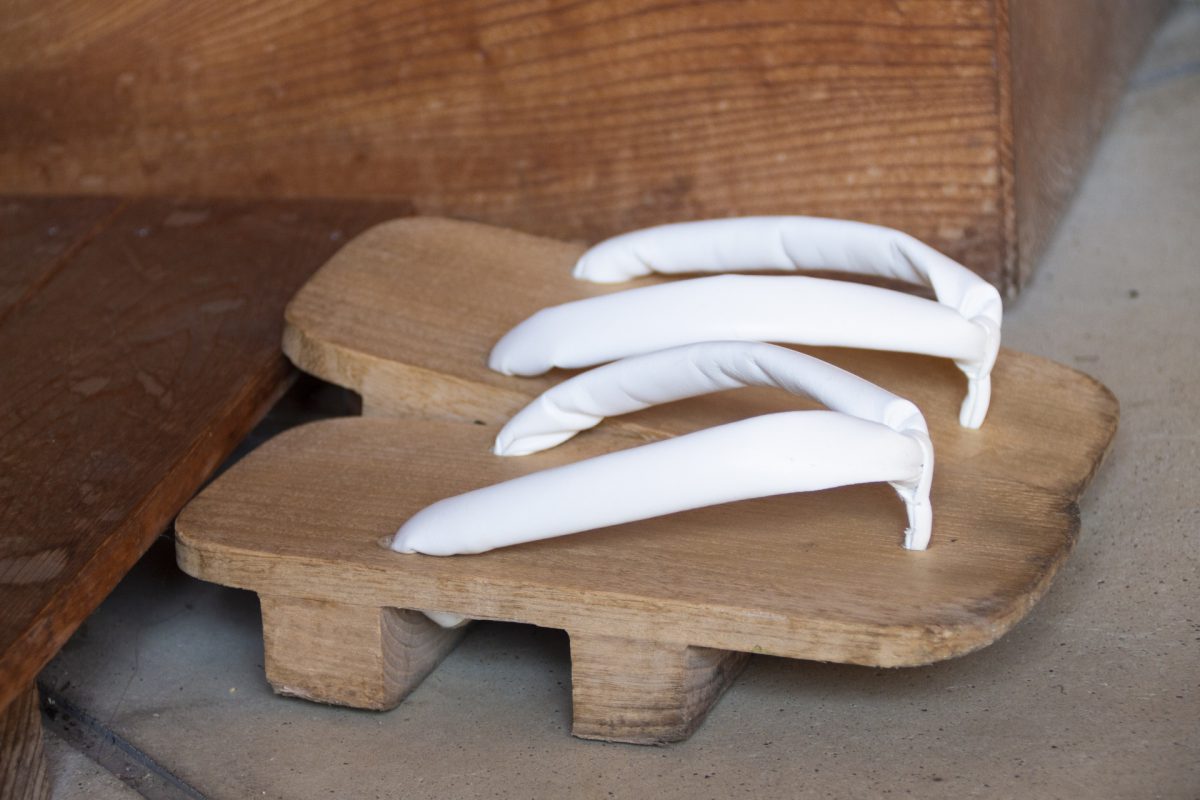
Geta are traditional Japanese sandals that look like flip-flops. The most classic style of geta consists of one board of solid wooden base elevated with two smaller pegs. On the top of the shoe you will find the v-shaped strip of cloth known as the hanao. Oiran, high-ranking courtesans in the Edo period in Japan, wore tall, lacquered koma-geta or mitsu-ashi (literally “three legs”) when walking in a parade with their attendants.
Zori

Zori are traditional sandals that look similar to geta, and can be made of rice straw, cloth, lacquered wood, leather, or rubber. Women’s zori are always raised in the heel while men’s zori are always flat. Some beautifully decorated women’s zori are worn with kimono.
Okobo
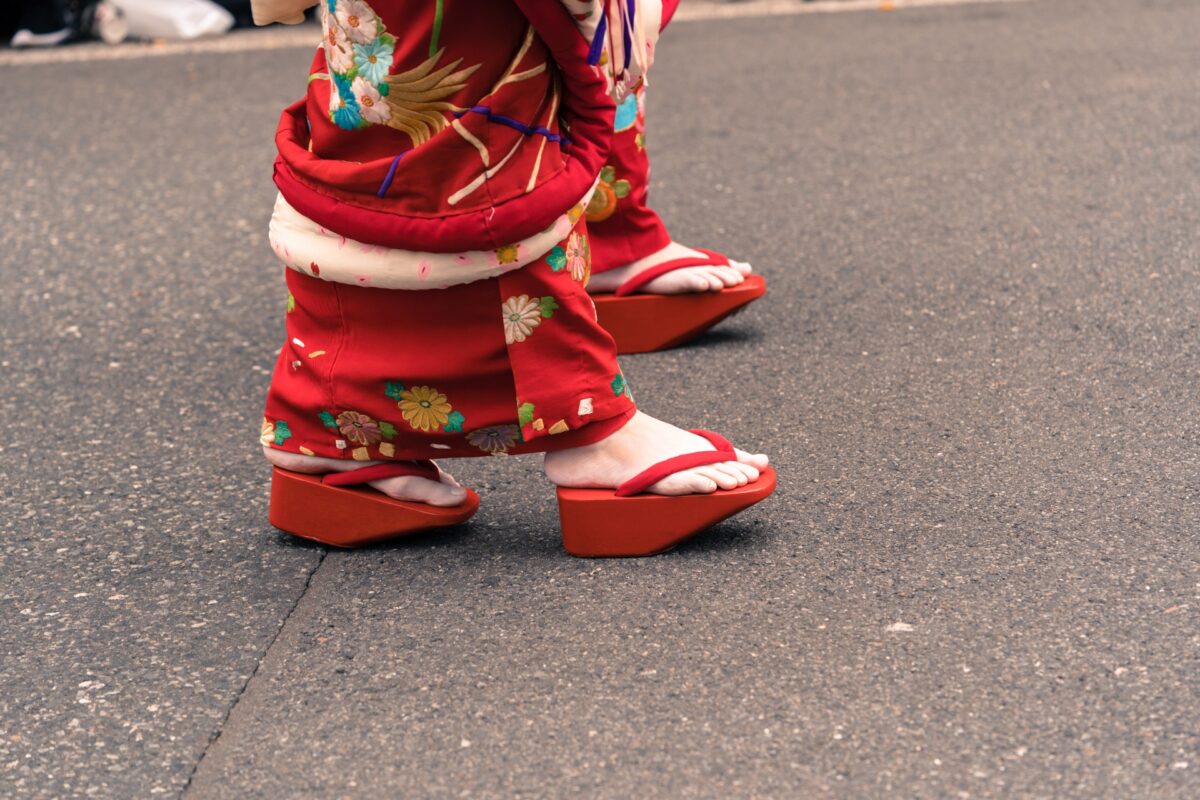
Okobo, also known as pokkuri, are the wooden platform sandals worn by young girls, women, and Maiko (apprentice geisha) in some regions of Japan. They are typically created from a solid block of wood, between 10 to 15 cm in size, and usually feature small bells tied to the underside of the shoe’s slope.
Hachimaki
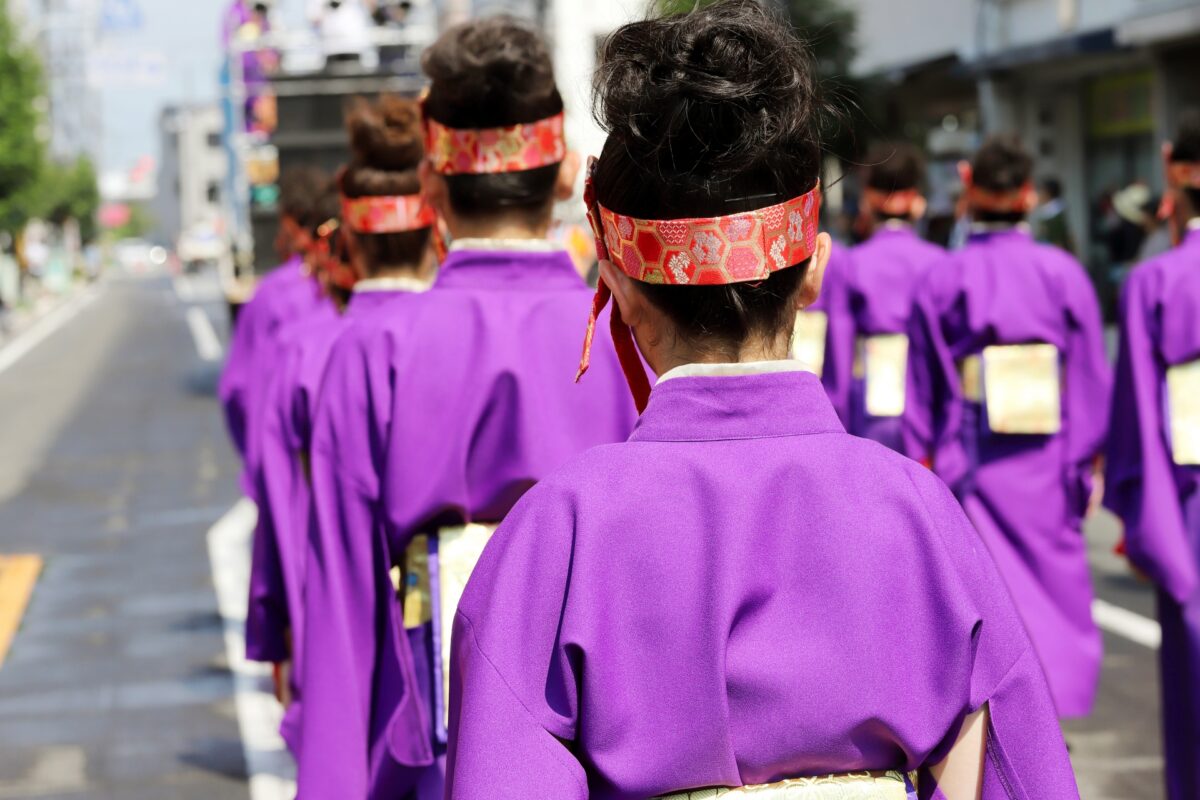
A hachimaki is a Japanese headband, usually made of red or white cloth. Japanese legend states that hachimaki strengthens the spirit and keeps you safe from evil spirits and demons. It is thought that the trend started with the samurai, who wore the headbands under their helmets to absorb sweat, and to keep the helmets in place during battle. Today they are worn as a symbol of effort or courage, especially by those in the military or by students in exam periods, or at festivals.
Tenugui
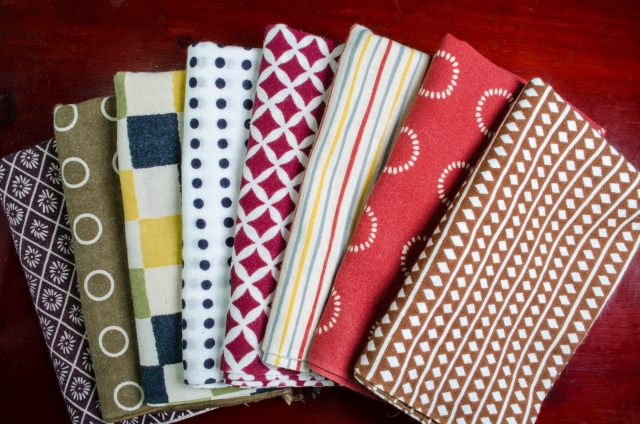
The literal meaning of tenugui is hand wipe. A tenugui is a cotton towel that has been used by Japanese households since the 9th century. These multi-purpose cloths are used everyday as hand towels, dishcloths, and washcloths. They are typically about 35 by 90 centimeters in size, plain woven, and almost always dyed with some pattern, often they have such beautiful and colorful designs, people also use them as a headwrap or headband. They are sometimes even used as decorations and hung on the wall like tapestries.

Japanese traditional clothing and accessories are an important part of Japanese culture. Some of the traditions are already centuries old and people take great pride in wearing the appropriate attire for certain events. When you are in Japan, you will have opportunities to find people wearing different items, especially when you visit the more traditional or touristic areas. You can also purchase at specialty shops, but be aware that these can be surprisingly expensive. When you are looking for a great souvenir or just for an option try on some traditional Japanese clothing, look for kimono rental shops. At tourist spots like Kawagoe, Kamakura, Gion district in Kyoto, or Asakusa in Tokyo, you will find many different options for kimono rental where you can choose kimono, yukata or hakama!
Check out: Kimono Rental Wargo
Japan Wonder Travel Tours
Japan Wonder Travel is a travel agency that offers guided tours throughout Japan.
From private walking tours to delicious Food and Drink tours, we can help you organize the best tours just for you! If you want to explore Japan and learn more about the history and backstories of each area you are visiting, our knowledgeable and friendly English speaking guides will happily take you to the best spots!
In addition, we can provide you with any assistance you may need for your upcoming trip to Japan, so please feel free to contact us if you have any questions or need some help!
▶Tokyo Tsukiji Fish Market Food and Drink Tour
Explore the most lively and popular fish market in Tokyo and try some of the local’s favorite street foods and sake with one of our friendly and knowledgeable English speaking guides!

▶Tokyo 1–Day Highlights Private Walking Tour (8 Hours)
There’s no better way to explore an area than taking a tour with a knowledgeable local guide. You will have the chance to learn about the history and interesting background stories of Tokyo, as well as discover some hidden gems which can be hard to do without a guide.

▶Mt. Fuji Day Trip Bus Tour from Tokyo
Experience the breathtaking views of Mt. Fuji by visiting the highlights of the area on our guided sightseeing bus tour! Departing from Shinjuku in central Tokyo, you can travel comfortably to all of the best spots in the area by bus.

▶Kyoto Private Full Day Walking Tour
On this full-day private tour of Kyoto, you will be able to see the highlights of Kyoto in just one day and at the same time develop a deeper understanding of both the culture of the area and Japan as a whole.

Follow us on Instagram, Facebook, Twitter, and TikTok for more travel inspiration. Or tag us to get featured!
Happy traveling!
Stay informed of the best travel tips to Japan, the most exciting things to do and see, and the top experiences to have with the Japan Wonder Travel Newsletter. Once every two weeks we will introduce you to our latest content.
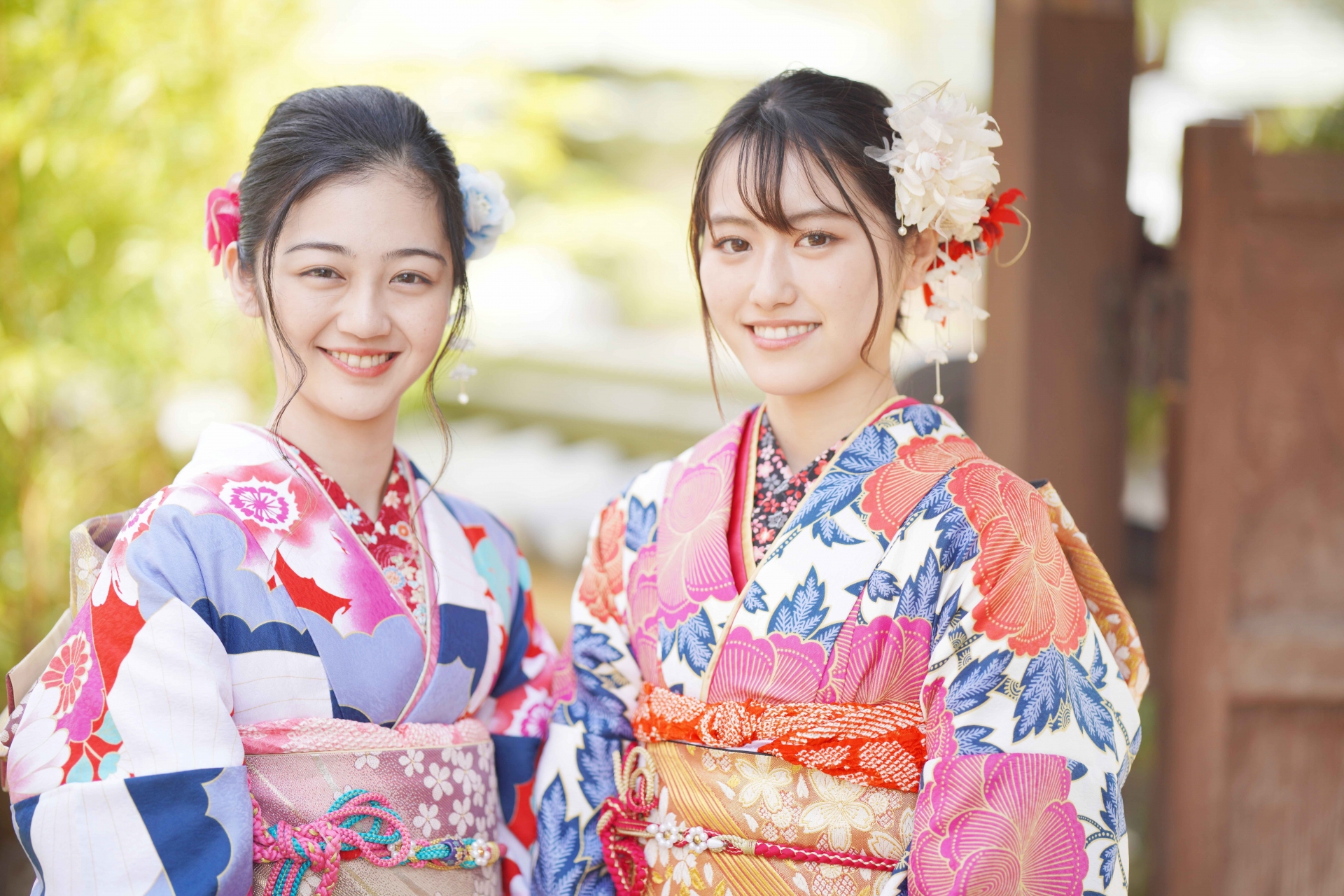




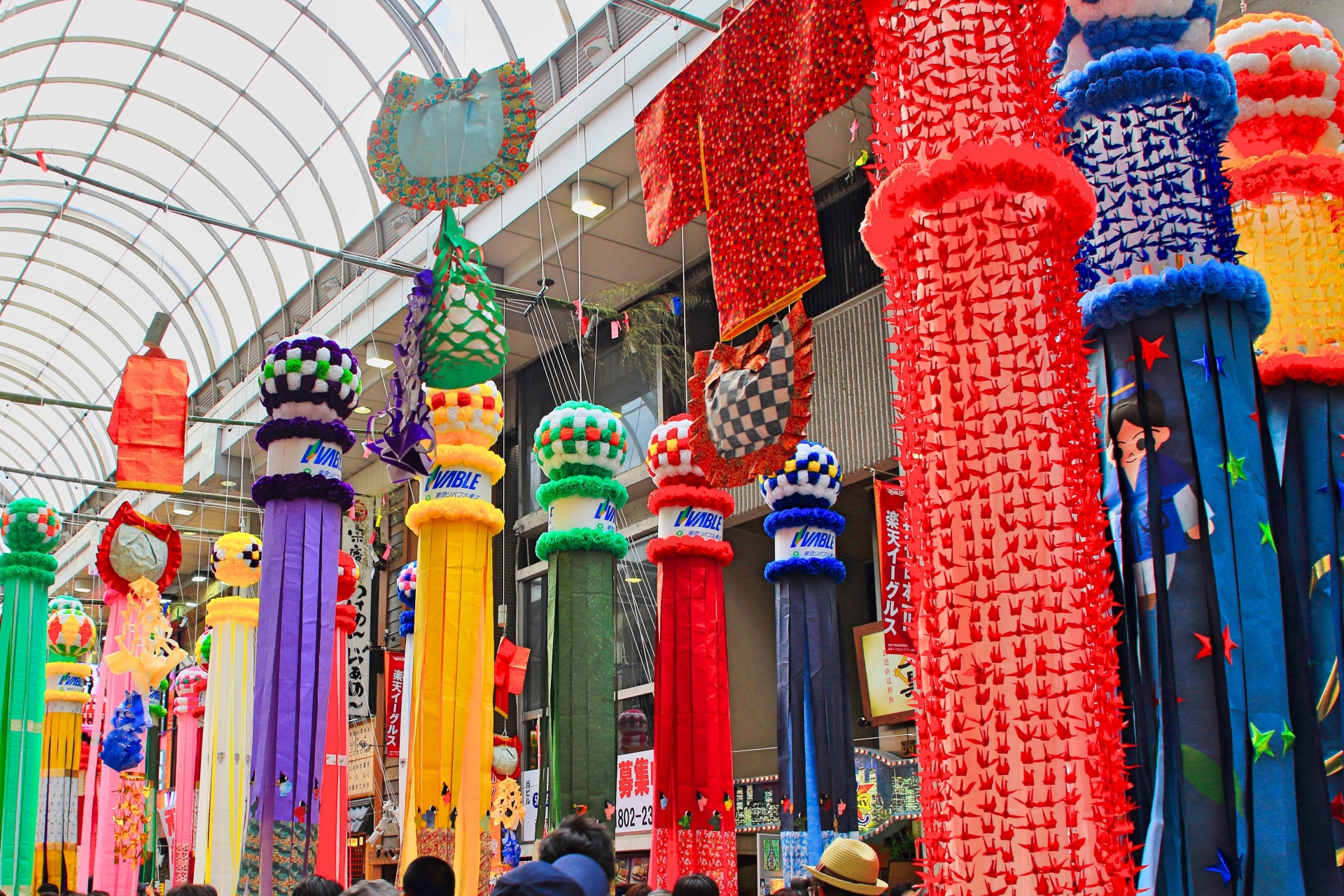
Comments
Great Article!! Yeah, Japanese clothing and accessories are in trend not only in Japan but all over the world. People wear kimonos in both traditional and as well as western styles.